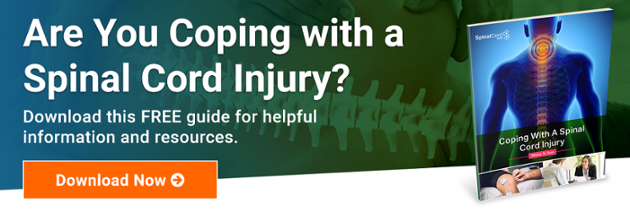6 Tips to Combat Pressure Sores After a Spinal Injury

Out of everybody on the planet, people with spinal cord injuries (SCI) are among the highest risk populations susceptible to pressure ulcers, or what are more commonly known as pressure sores. It's a sad but true fact. However, there are prevention tips and methods that can save you from the hell of suffering with pressure sores after a spinal injury. You don't have to accept them as a way of life just because you're sitting all day.
In fact, there are thousands of people with spinal cord injuries who have successfully prevented post-injury pressure sores for years. Below are a handful of these tips. From upgrading to the best wheelchair cushion to eating like an Olympian, the tips below can keep your skin in pressure-sore free shape.
Eat Your Daily Protein
One of the easiest things you can do to prevent pressure sores is to eat your daily required amount of protein. Many people don't understand how important protein is to the overall health and wellness of your body. Protein not only can prevent pressure sores, it also can help heal them more quickly by synthesizing enzymes, collagen and connective tissues, as well as multiplying cells. Protein enables your body to strengthen your skin by it building up, as well as bulking up the muscle underneath. Meats, protein shakes, protein bars, eggs, spinach, beans, nuts, these are the things you need to eat to get your protein each day.
Eat Veggies, Drink Water Religiously
When it comes to other things you put in your body every day to prevent pressure sores, eating a wide variety of vegetables and drinking copious amounts of water also can help. Kale and greens, such as spinach, are especially good. Avocados, peas, sweet potatoes and green peppers are all great for the skin as well. The more varied the vegetables you eat, the wider the variety of vitamins and minerals. Vitamins and minerals strengthen your skin in a huge way. Water also has a glorious effect on the skin, hydrating it and strengthening it. Pro tip: Whenever you drink soda and alcohol, make sure to counteract it with equal parts water.
Get Custom Seating
Getting custom seating is not a must, but if you can get it, it’s one of the best ways to prevent pressure sores. Many people typically use a Jay or a Roho cushion and these are fine, but if your knees are too high or if anything else about your wheelchair is ill-suited to your body, it can have a negative effect on your tush over time, leaving you with a pressure sore before you know it. This is why getting custom seating is so great because it uses computerized pressure mapping to see exactly where under your tush unneeded pressure is happening. Seating specialists will then create a molded seat just for you in accordance to these high pressure areas.
Wear the Right Clothes & Shoes
You also need to be aware of the clothes and shoes you wear every day as they can have a negative effect on your skin if they're are too tight or constrictive. Many pants — jeans, in particular — have bulky back pockets that can cause skin breakdown if you sit in them too long. Shoes as well can be too tight and cause pressure sores on the feet (thanks to edema/swelling).
When it comes to clothing, always avoid any embellishments or constrictiveness in any garment. You also want to make sure there isn't too much loose fabric since this can also be problematic for the skin if you sit on it. For shoes, try to find shoes that are wide with. If you cannot find a wide show in the design you like, try to go a half-size bigger.
Remember Pressure Relief Throughout the Day
If you're not moving that much during the day, doing daily pressure release exercises is a must. For paraplegics and some quadriplegics, this means picking up your leg under the knee and stretching the thigh upwards for 10-20 the seconds to relieve pressure from the tush, and you should do this to each leg every couple of hours or so. For quadriplegics who cannot lift their legs, many now get a tilt power wheelchair that tilts their entire body backwards, completely taking the pressure off. Whichever method you choose, make sure you do pressure relief exercises at least 3 to 5 times a day. We've put together a list of 5 essential daily exercises for SCI survivors.
Check Your Skin Daily
Despite doing the above measures, it's always good to perform daily skin checks when you have a lack of sensation. You can either do this in the morning or at night, and if you don't have a caregiver to assist you, you can use your phone or a mirror so you can see your backside and make sure that no skin breakdown or ulcertation is beginning. If you catch a pressure sore before it progresses beyond stage one, your chances at helping it to quickly heal are optimal. Make sure to check other areas of the skin, too, as you never know where your skin might suddenly experience unwanted pressure.
If you already have a pressure store and are struggling to help it heal, check back next week for an article on must-know tips on healing a pressure sore quickly.
Stay Updated on Advancements On Traumatic Brain &
Spinal Cord Injuries
About the Author





